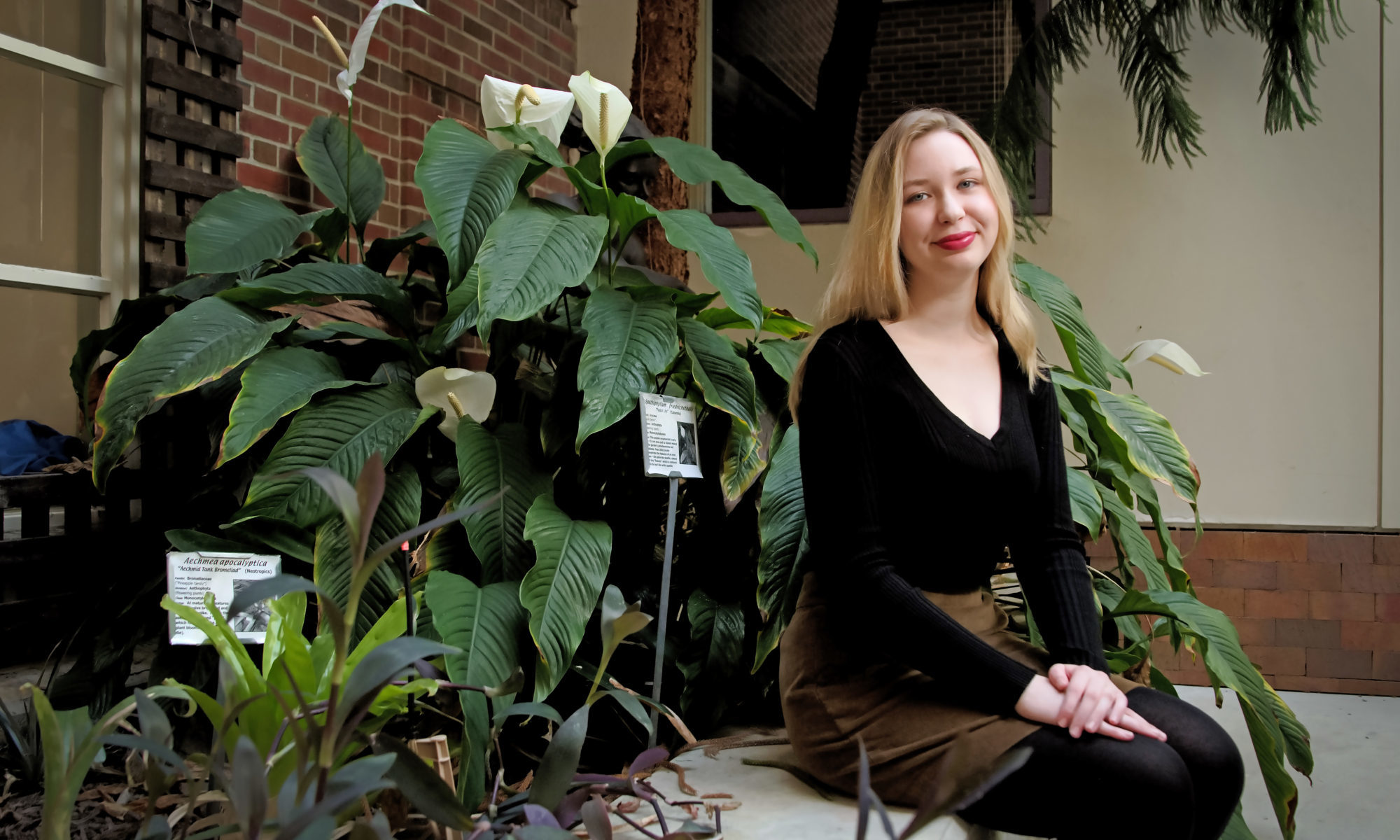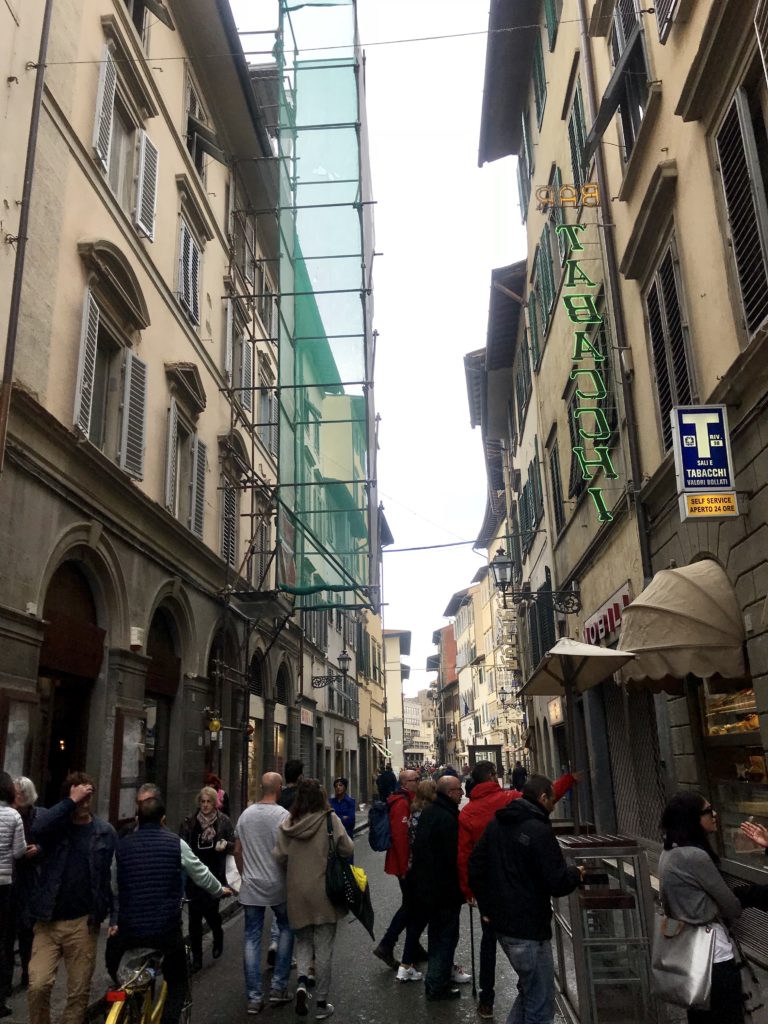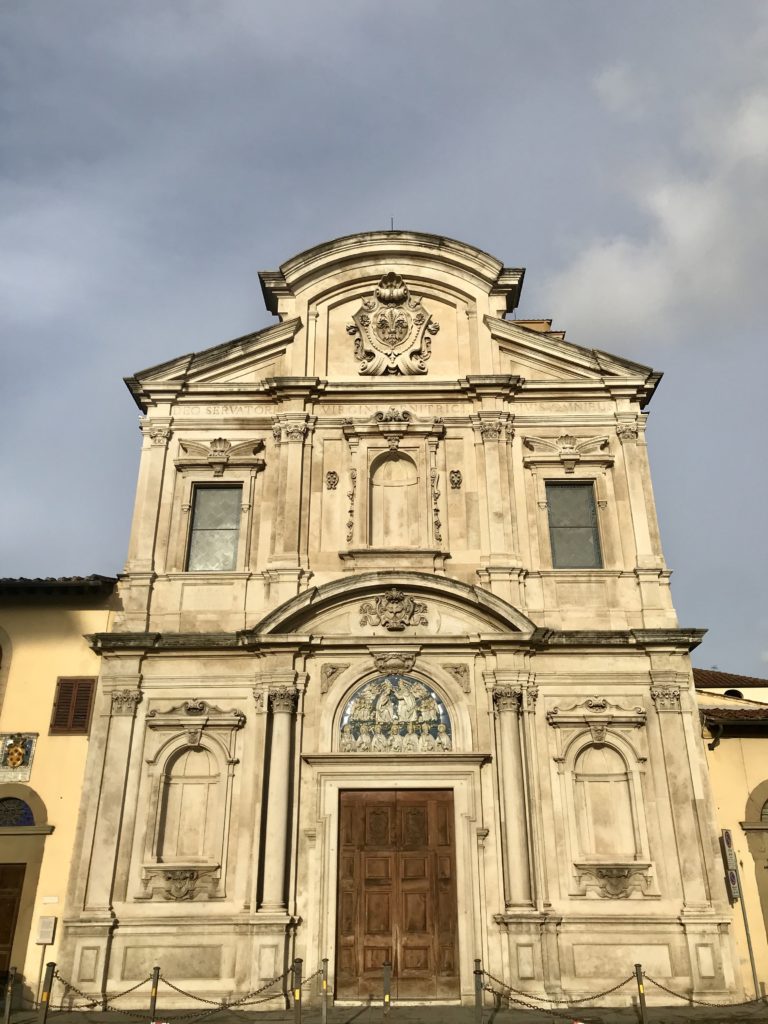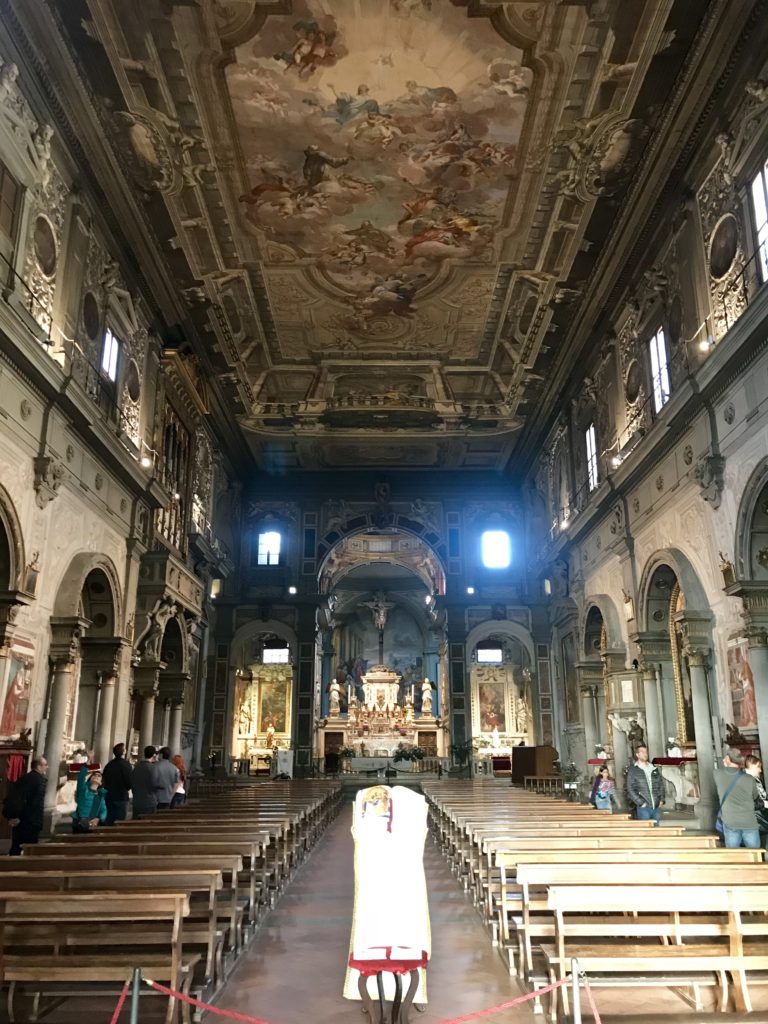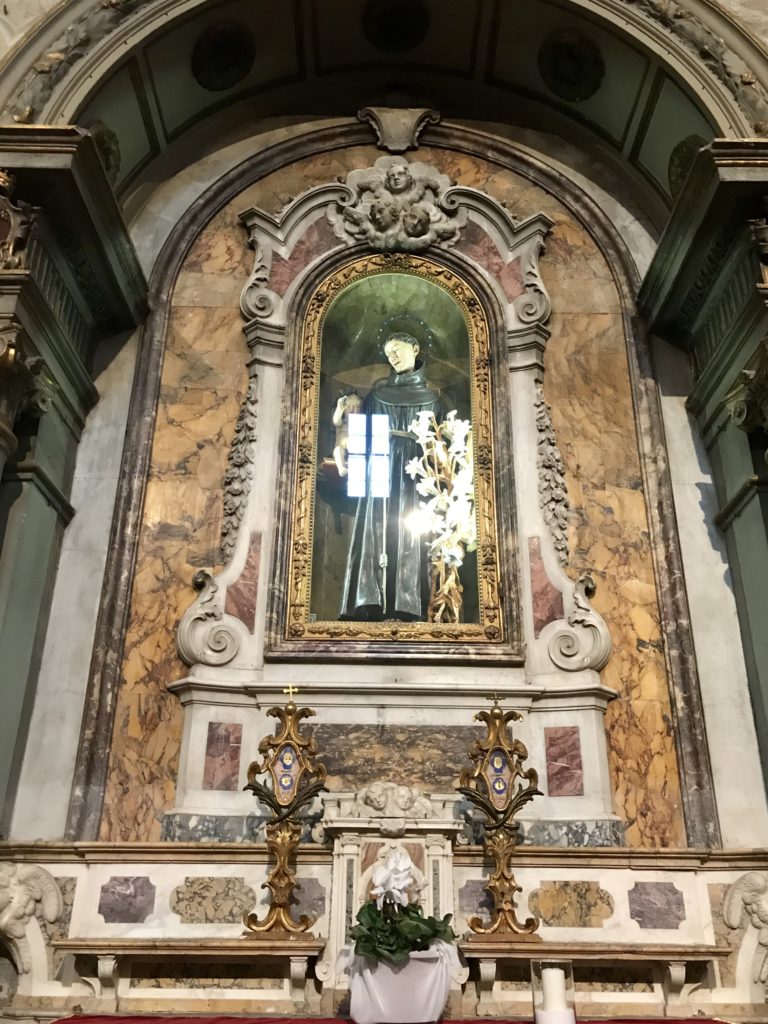One of the reasons why I wanted to study abroad in Italy was the promise of experiencing a country whose culture is so steeped in a single religious tradition. Walking around Florence for the first couple of weeks was surreal because my sight line was constantly being dominated by religious imagery, from shrines to saints in the niches of random buildings to the hundreds of year old churches around every corner. Living within this new type of religious sphere made me even more curious about participating in an Italian feast day or festival firsthand. With this in mind, I decided to set out to experience how All Saints’ Day and All Souls’ Day would unfold against the backdrop of Florence.
All Saints’ Day, commonly called Ognissanti, and All Souls’ Day, Il giorno dei Morti, take place on the first two days on November following Halloween. In Italy there is a “ponte” or long weekend where there is no school or work so people are free to observe these days. Ognissanti is celebrated in honor of all known and unknown saints. Its date of November 1 can be traced back to the papacy of Gregory III (731-741) when he dedicated a chapel at St. Peter’s in Rome to all saints. The festivities for Ognissanti are more subdued than the following day and usually involve attending mass.
Il giorno dei morti marks a transition from the commemoration of the intangible lives of saints to that of the more tangible deaths of one’s loved ones. My only frame of reference for understanding Il giorno dei morti was what I learned about the Mexican Día de los Muertos in my high school Spanish class through the vibrant images of ornate altars and graveside decorations. The Florentine iteration of this feast day is more restrained, but is still centered on making the trek to one of the city’s cemeteries to tend to the graves of family members with bundles of flowers in tow.
Because Ognissanti seems to be overshadowed by Il giorno dei morti, there was not a clear of a path to follow in order to observe the holiday. But, I thought it would be appropriate to visit the church in Florence that is dedicated to all saints: La Chiesa di San Salvatore di Ognissanti. On my way to the church, I noticed that there were many more families walking around together than usual and people socializing in the streets. It struck me that this ponte had a social dimension that went alongside its overt religious one.
La Chiesa di Ognissanti is situated in a piazza that looks out across the Arno River that runs through Florence. The church itself was built in the 1250s by a lay order called the Umiliati and was later taken over by the Franciscan order in 1571, but its most famous historical detail is being the resting place of Sandro Botticelli. I made my way into the church surrounded by other small groups, some tourists and some Italians. The Baroque architecture of the church’s interior was staggering with my gaze being drawn first to the framed altar and then up to the painted ceiling. The sides of the nave were flanked with frescoes by such masters as Giotto, Ghirlandaio, and of course Botticelli.
Interspersed between these works were extremely lavish shrines to a handful of different saints. Each had fresh flowers before it in honor of the feast day, a foreshadowing of the use of flowers the following day. A statue of Saint Anthony was particularly striking as it rested behind a glass sealed alcove which was decorated with swirling marble details of flowers mimicking the real flowers that had only been there a day.
After exiting the church and I was greeted once again by the sight of many Italian families out for a stroll together in the dusk. Visiting a church like this one on Ognissanti is a way to quietly reflect on the holiday itself, but for me was also a catalyst for thinking about how occasions such as these are truly a window into the subtleties of an unfamiliar culture.

